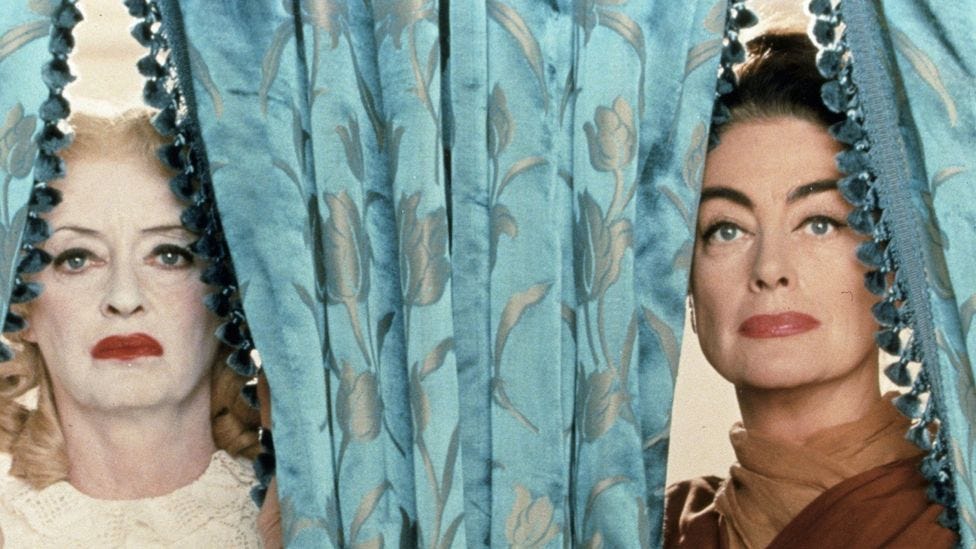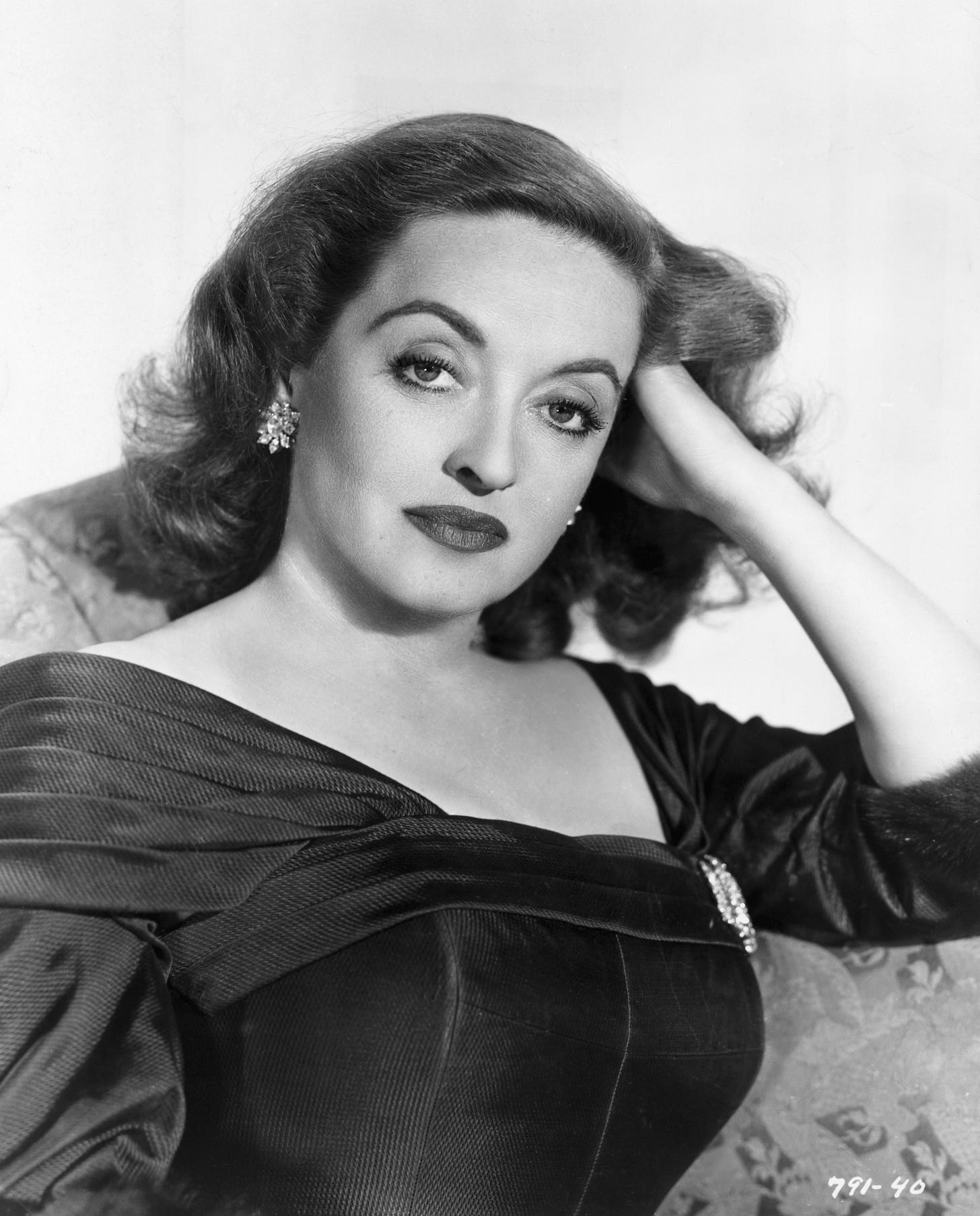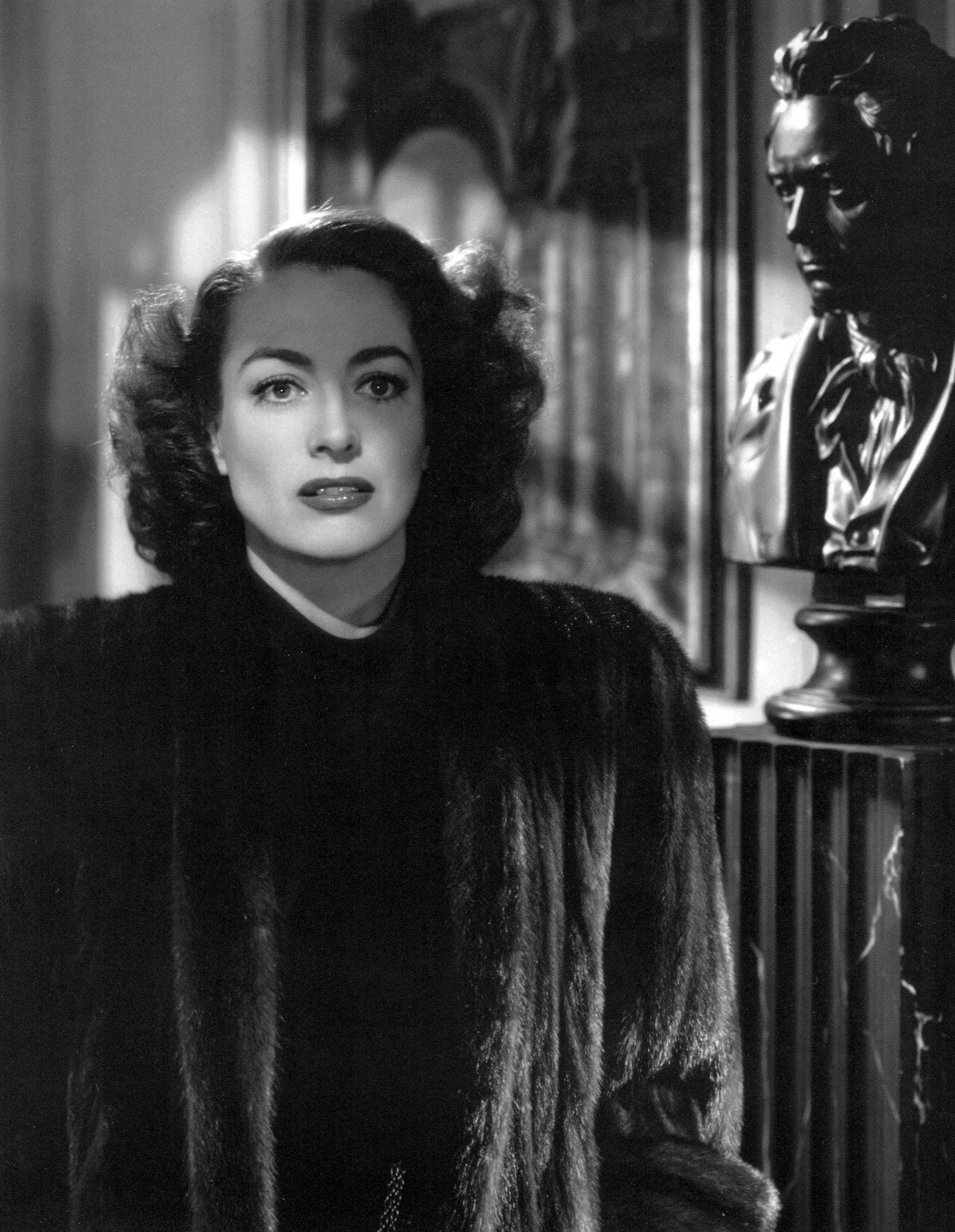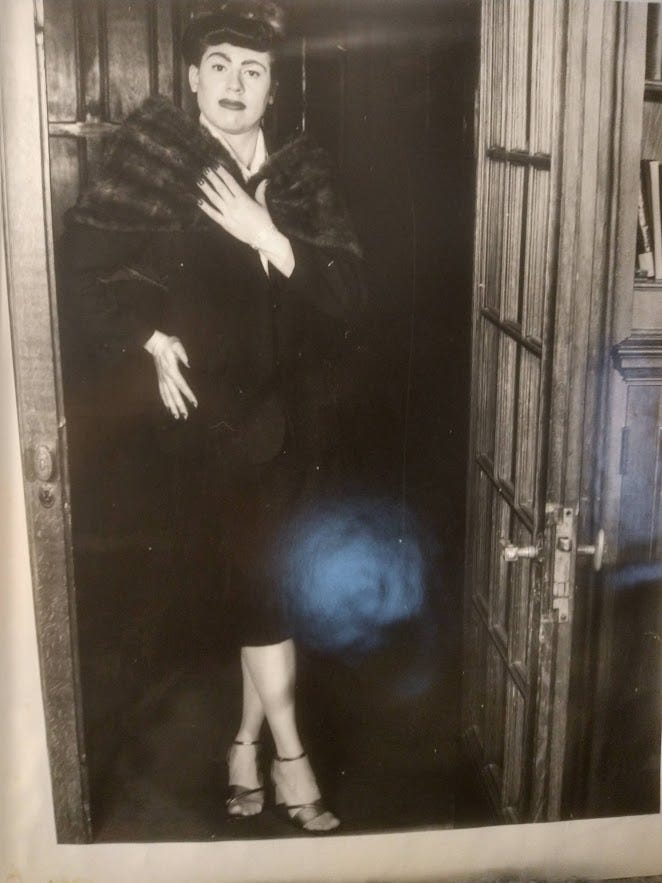This post has a link at the bottom for Disaffected supporters to join our online watch party coming up. That part is paywalled.
If you want to join us, we’d love to have you. Simply become a paid subscriber to this Substack.

Online meetups for Disaffected supporters are coming back with the first installment of the miniseries Feud: Bette and Joan. We’ll watch one episode per week of this 8-part mini-series.
The watch party will happen Sunday, March 19, at 3 pm US Eastern time.
Wait before you click away! Are you “not interested in gay shit?” Maybe you’re a straight dude who doesn’t get the obsession we homosexuals have with these women? I hope you’ll take a leap of faith and join us for the viewing and the discussion afterward.
Whether you’re gay or not, into old Hollywood or not, this series is one of the finest pieces of television production in decades. It’s grippingly entertaining, surprisingly poignant, psychologically astute, and has enough sass and bitchery to satisfy the most discerning connoisseur of camp.
There are reasons why gay men are fascinated with these old Hollywood stars. Most people don’t give it very deep thought. The gays just like old actresses and musicals and drama, right?
Right. But that’s not interesting. The question is why do gay men specifically obsess over this type of battle-axe in Hollywood?
What does it mean? Where does it come from? Can it tell us anything about the inner lives of gay men on a deeper level than “they like bitches?” Can it tell us anything more interesting about women, the drive to stardom, the ouroboros of narcissism that is Hollywood, about the formative experiences that feed the drive for immortal stardom?
Can it tell us anything about the narcissistic and histrionic world we live in today?
It can tell us a lot about all those things. After each episode, we’re going to stay around to discuss the show.
The Backstory
Here’s a primer for those unfamiliar with these actresses and the world they lived in.
Bette Davis was the most innately talented Hollywood actress of the 20th century. No one had ever seen her nerve or realism before. She was one of those women that men and women alike said had “balls.”
Bette Davis in character as Margot Channing, All About Eve, 1951
Davis thought of herself as a character actress, not a movie star. She thought nothing of looking or acting ugly or ridiculous if the part called for it. Her tombstone bears the epitaph she chose: ‘She did it the hard way’.
She had a very strong personality and could be difficult, as most people at her level are. I suspect she had a lot of sharp edges and some irascible, prominent narcissistic traits, but I do not think she had a personality disorder. I think (and I can only guess from a distance) that she really was a decent woman.
Joan Crawford was the movie star to end them all. She was the queen of Hollywood, and embodied the classic movie star archetype like no other. She was also one of the most beautiful women ever photographed (you must go to her younger days before her masculine mask of makeup took over).
Joan Crawford as Helen Wright in Humoresque, 1947
Less talented as an actress—but very good in many of her pictures, better than people credit her for—Crawford was substantially more deranged than Davis. Most people know Joan Crawford as the child abusing alcoholic described in her adopted daughter, Christina’s, 1978 memoir Mommie Dearest.
I believe Joan Crawford had Narcissistic and Borderline personality disorders.
The memoir was of course made into a famous movie starring Faye Dunaway as Crawford. Though the film had pacing and scripting problems, and it was panned at the box office, it has elements of genius that are ignored.
Dunaway’s performance as Crawford was Oscar-worthy. The visual resemblance and the mimicry of Crawford’s tightly controlled rage and over the top scene-chewing domination was uncanny.
Gay men have long been obsessed with Davis and Crawford, among others. But we have been most specifically obsessed with the movie Mommie Dearest.
You’ve probably noticed this, at least in passing. But did you ever wonder why? I rarely notice anyone ask the question. It’s just assumed that “the fancy men like this.”
I think I know why. I will offer my thoughts on my own obsession, and, yes, I am suggesting that this is the reason most gay men find themselves drawn to high-drama women, to Cluster B actresses.
You may react by saying that I am projecting, or over-generalizing. OK. But consider the difference between “projecting and generalizing” and “using actual empathy to find understanding about common human motivations.”
In many ways, I am typical of gay men. What has been true for me is very likely to be true in some way, with the usual exceptions, for other gay men.
If it is not true for you, or if you believe it is not true for the gay men you know, I understand.
There is an objective statistical correlation between male homosexuality and being raised by a domineering, or overly enmeshed mother, along with an absent, inadequate, or violent father. It’s real even if it makes society uncomfortable. And how it makes society uncomfortable. Uncomfortable enough to socially cancel anyone, even a gay man, who suggests it.
I believe that my obsession with Joan Crawford (and with other Cluster B Hollywood women) was my way of negotiating my feelings about my mother without having to look at the Gorgon directly and risk turning to stone. As a child, it was not emotionally possible for me to face the reality of how abusive and deranged my mother truly was.
She was the only mother I had. The father figure in my early childhood was a wife beater, a child beater, and a pedophile. My psyche would have disintegrated if I couldn’t hold on to the notion that my mother really loved me, and that she was my savior.
That was not true. My mother has Borderline and Narcissistic personality disorders. Such people are not capable of love in any normal way.
But a child cannot analyze this, let alone internalize it. I was 41 years old before I looked at Medusa without a deflecting mirror.
But as a child and an adolescent, my feelings about my mother were conflicted. What my unconscious knew was out of alignment with what my everyday intellectual brain was telling me (lies). Like it is for most young people, this internal conflict was opaque to me.
Joan Crawford embodied the things I was terrified of in my mother, and the things in my mother that I wanted to take on. Crawford is my dark muse. A beautiful and rich version of my plain and poor mother. A mental paper doll that could be dressed in any symbolic frock.
Me as Joan Crawford from Mildred Pierce, photoshoot at Sarah Lawrence College, 1998
My mother was a bitch. I wanted to be a bitch, too (I succeeded, too well). That was how you gained power. That was how you put on armor. That was how you made sure no one, ever, got one over on you.
Joan Crawford was a bitch. More than that, but I don’t like to use the word.
And she was beautiful, rich, and powerful. She could wither any man, woman, or child with one raised eyebrow. To a scared, emotionally fragmented child, this was enormously attractive. Glamorous. Intoxicating.
Are you still with me after all those words? If so, I appreciate it.
Feud: Bette and Joan
This miniseries stars Susan Sarandon as Bette Davis, and Jessica Lange as Joan Crawford.
Sarandon is a visual ringer for Davis, and no one else could have been cast for this role. She is perfect and utterly convincing.
Lange does not physically resemble Crawford to the degree that Faye Dunaway did, but she channels Joan Crawford and is entirely believable.
Much ink has been spilled about the legendary feud between these two. But until this series, none of it has done these women justice as whole humans. As real people, often tragic people, with real motivations and real reasons for why they became the women they did.
I found myself able to empathize, and sympathize, with Joan Crawford in a way that I couldn’t before. That’s down to excellent script-writing and Lange’s talent.
The basic premise: Feud covers about the last 15 years of Joan Crawford’s life, beginning in the 1960s. It revolves around the production of Whatever Happened to Baby Jane, the classic psychological horror film about two sisters, former stars, trapped in a moldering Hollywood mansion, and locked in a mutually abusive psychological house of mirrors.
Baby Jane was the only picture Davis and Crawford ever made together. They strongly disliked each other, but each was privately envious of the other. That real-life tension comes through in the movie, and it’s accurately and compellingly portrayed in Sarandon’s and Lange’s performances.
I watched a few episodes with a friend who said, “I wasn’t expecting it to be as sad and moving as it was.”
It is sad. The psychological vulnerabilities of these two women are presented baldly. The way actresses beyond 30 were pushed to the side and thought of as washed up hags is painful to watch (and nothing has changed).
Surprisingly, Feud is honest about the fact that the women themselves were just as responsible for the way they “beautied” their way to the top and crushed older women to get there before father time turned the tables on them. Oh, there was plenty of male sexism at play. But this is not a modern feminist “the patriarchy alone made us do it” screech-fest.
It’s also a hell of a lot of fun. The costumes, cars, sets, and locations are pitch perfect. We are presented with Old Hollywood just as it begins to get tatty, the way some old American roadside motels still advertise Color Television! on faded plastic signs.
Do you want bitchery? Feud gives it in spades.
Joan to Bette on the first day of filming: It was Gloria Swanson who was robbed of the Oscar in 1951 not youuuuuuuuuuuuuuu, bitch!”
I hope you’ll join us. Link to the watch party below the paywall for subscribers.
Keep reading with a 7-day free trial
Subscribe to Disaffected Newsletter to keep reading this post and get 7 days of free access to the full post archives.






